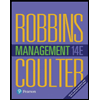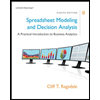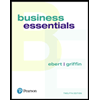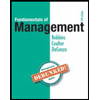SITXHRM008 Task-1 Ankh-Erdene Bud
docx
keyboard_arrow_up
School
Greenwich English College *
*We aren’t endorsed by this school
Course
502
Subject
Management
Date
Nov 24, 2024
Type
docx
Pages
12
Uploaded by BailiffAnteater3751
Assessment-1
SITXHRM008 ROSTER
STAFF
Student Must Fill this Section
Qualification
SIT40521 Certificate IV in Kitchen Management Student Name:
Ankh-Erdene Bud
Student ID:
Term: Year: Privacy Release Clause:
“I give my permission for my assessment material to be used in the auditing, assessment validation & moderation Process”.
Authenticity Declaration:
“I declare that:
The material I have submitted is my own work;
I have given references for all sources of information that are not my own, including the words, ideas and images of others”.
Student Signature: Date:
Assessment Outcome
Assessor Name:
Attempt
Satisfactory Not Yet Satisfactory
Date
Assessor Signature
Initial attempt
2
nd
attempt/Re-
assessment
WSC-ASSSITXHRM008-V1.1-23.11.2023
Page | 1
International College of Australia Pty Ltd T/A Western Sydney College
RTO: 45360 | CRICOS: 03690M
WSC-ASSSITXHRM008-V1.1-23.11.2023
Page | 2
International College of Australia Pty Ltd T/A Western Sydney College
RTO: 45360 | CRICOS: 03690M
Information for Student:
All work is to be entirely of the student.
General Information for this assessment:
Read the instructions for each question very carefully.
Be sure to PRINT your FIRST name & LAST name in every place that is
provided.
Short questions must be answered in the spaces provided.
For those activities requesting extra evidence such as: research reports,
essay reports, etc. The student must attach its own work formatted in
double space, Arial 12 pts.
All activities must be addressed correctly in order to obtain a competence
for the unit of competency.
If the student doesn’t understand the assessment, they can request help
from the assessor to interpret the assessment.
Re-submission of assessment after the term will incur additional fees.
Re-assessment of Result & Academic Appeal procedures:
If a student is not happy with his/ her results, that student may appeal against their
grade via a written letter, clearly stating the grounds of appeal to the Chief
Executive Officer. This should be submitted after completion of the subject and
within fourteen days of commencement of the new term.
Re-assessment Process:
An appeal in writing is made to the Academic Manager
providing reasons
for re-assessment /appeal.
Academic Manager
will delegate another faculty member to review the
assessment.
The student will be advised of the review result done by another assessor.
If the student is still not satisfied and further challenges the decision, then a
review panel is formed comprising the lecturer/trainer in charge and the
Academic Manager
OR if need be an external assessor.
The Institute will advise the student within 14 days from the submission date
of the appeal. The decision of the panel will be deemed to be final.
If the student is still not satisfied with the result, the he / she has the right to
seek independent advice or follow external mediation option with nominated
mediation agency.
Any student who fails a compulsory subject or appeals unsuccessfully will be required to re-enrol in that subject. The cost of reassessment will be borne by the Institute. The external assessor will base his/her judgement based on principles of assessment. These principles require assessment to be reliable, fair, practical and valid.
Academic Appeals:
If you are dissatisfied with the outcome of the re-evaluation process, you
have a right to appeal through academic appeals handling protocol.
To appeal a decision, the person is required to complete the WSC- Request
for Appeal of a Decision form with all other supporting documents, if any.
This form is available via our website. The completed Request for Appeal
form is to be submitted to the Student Support Officer either in hard copy or
electronically via the following contact details:
Student Support Officer, Western Sydney College (WSC), 55 High St,
Parramatta NSW 2150, Email: info@wsc.nsw.edu.au
The notice of appeal should be in writing addressed to the Chief Executive
Officer and submitted within seven days of notification of the outcome of the
re-evaluation process.
If the appeal is not lodged in the specified time, the result will stand and you
must re-enrol in the unit.
In emergency circumstances, such as in cases of serious illness or injury,
you must forward a medical certificate in support of a deferred appeal. The
notice of appeal must be made within three working days of the concluding
Comments/Feedback to Students Introduction
Welcome to the Student Assessment Tasks for SITXHRM008 Roster staff
. These tasks have been designed to help you demonstrate the skills and knowledge that you have learnt during your course. Please ensure that you read the instructions provided with these tasks carefully. You should also follow the advice provided in the Hospitality Works Student User Guide
. The Student User Guide provides important information for you relating to completing assessment successfully.
Assessment for this unit
For you to be assessed as competent, you must successfully complete two assessment tasks:
Assessment Task 1: Knowledge questions – You must answer all questions correctly.
Assessment Task 2: Project – You must work through a range of activities to complete a project. WSC-ASSSITXHRM008-V1.1-23.11.2023
Page | 3
International College of Australia Pty Ltd T/A Western Sydney College
RTO: 45360 | CRICOS: 03690M
Your preview ends here
Eager to read complete document? Join bartleby learn and gain access to the full version
- Access to all documents
- Unlimited textbook solutions
- 24/7 expert homework help
Assessment Task 1: Knowledge questions Information for students
Knowledge questions are designed to help you demonstrate the knowledge which you have acquired during the learning phase of this unit. Ensure that you:
review the advice to students regarding answering knowledge questions in the Hospitality
Works Student User Guide
comply with the due date for assessment which your assessor will provide
adhere with your RTO’s submission guidelines
answer all questions completely and correctly
submit work which is original and, where necessary, properly referenced
submit a completed cover sheet with your work
avoid sharing your answers with other students.
Assessment information
Information about how you should complete this assessment can be found in Appendix A of the Hospitality Works Student User Guide
.
Refer to the appendix for
information on:
where this task should be completed
the maximum time allowed for completing this assessment task
whether or not this task is open-book. Note
: You must complete and submit an assessment cover sheet with your work. A
template is provided in Appendix B of the Student User Guide. However, if your RTO has provided you with an assessment cover sheet, please ensure that you use
that.
WSC-ASSSITXHRM008-V1.1-23.11.2023
Page | 4
International College of Australia Pty Ltd T/A Western Sydney College
RTO: 45360 | CRICOS: 03690M
i
Questions
Provide answers to all of the questions below.
1.
List two sources of information that you could access to find information about the Hospitality Industry (General) Award.
https://www.fairwork.gov.au/employment-conditions/awards/
https://qha.org.au/
2.
List two further sources of information that you could access, to find out information on work agreements for the hospitality industry.
https://www.richardweechambers.com/contracts-in-the-hospitality-industry/
https://edupi.com.au/developments-in-labour-agreements-for-the-hospitalityindustry/
3.
Why is it important to check the relevant award conditions when preparing a roster?
It is important to check the relevant award conditions when preparing a roster because when an employer breaches the award or fails to meet the rules and regulations, the employee is entitled to overtime pay.
4.
How is an enterprise agreement different from a modern award?
Enterprise agreements only apply to the employees of one particular organization which are established internally and then approved by the Fair Work Commission while Modern Awards are standardised and non-negotiable.
5.
Explain how industrial agreements can affect the preparation of rosters.
Industrial agreements can affect the preparation of rosters through the following: single or multiple awards and enterprise agreements, award provisions for leave, mandated breaks between shifts, maximum allowed shift hours, standard, overtime, and penalty pay rates, overall number of hours allocated to different staff members, and use of contractors and consideration of fees, permanent or casual staff.
6.
Identify at least two factors of how each of the following award provisions will impact the rostering process.
Leave
One employee taking a one-day leave can throw out the whole
roster.
Late requests for leave will hurt the time looking for a substitute.
Mandated breaks between shifts
Having trouble during negotiation as to the timing and length of breaks.
Circumstances when compensation is preferred rather than breaks.
Maximum allowed shift hours
Changing or swapping of shifts by employees.
Minimizing sleep debt and fatigue.
Standard pay rates
Increase in efficiency.
Reduce turnover rates and direct and indirect payroll costs.
WSC-ASSSITXHRM008-V1.1-23.11.2023
Page | 5
International College of Australia Pty Ltd T/A Western Sydney College
RTO: 45360 | CRICOS: 03690M
Overtime pay
rates
Claims for payment of additional hours worked.
Employee fatigue due to choosing to work overtime for extra pay.
Penalty pay rates
Impact on annual earnings.
Impact on individual employment choices.
7.
List three impacts of contractor fees, if you had to include them in a staff roster.
Contractor can offer monetary advantage if an organization is currently working with a
restrained budget.
Employees hired by the contractor typically do not receive any benefits until they become direct employees.
They are paid only for the specific hours they work rather than receiving a fixed salary.
8.
Outline two considerations when rostering permanent or casual staff.
Busy shifts need the best staff.
Workforce and skills required to deliver services.
9.
Using the table below and referring to the Hospitality Industry (General) Award 2010, (this
can be found at the Fair work Australia government website www.fwc.gov.au
), identify the
key elements of the award.
Leave entitlement
Does not apply to casual employees.
Mandated breaks between shifts
Unpaid meal break of no less than 30 minutes for those who worked more than 6-8 hours.
Maximum allowed shift hours
An employer may request for overtime for reasonable reasons with overtime pay.
10.
Using the table below and referring to the Hospitality Industry (General) Award 2010, (this
can be found at the Fair work Australia government website www.fwc.gov.au
), provide the
overtime payable.
Period of overtime
Overtime payable (as a percentage)
Monday to Friday: First two hours
150%
Monday to Friday: After first two hours
150%
Midnight Friday to midnight Sunday
200%
A rostered day of
SAME AS THE NUMBER OF OVERTIME HOURS WORKED.
WSC-ASSSITXHRM008-V1.1-23.11.2023
Page | 6
International College of Australia Pty Ltd T/A Western Sydney College
RTO: 45360 | CRICOS: 03690M
Your preview ends here
Eager to read complete document? Join bartleby learn and gain access to the full version
- Access to all documents
- Unlimited textbook solutions
- 24/7 expert homework help
11.
Using the table below and referring to the Hospitality Industry (General) Award 2010, (this
can be found at the Fair work Australia government website www.fwc.gov.au
), provide the
appropriate penalty rate for each period.
Penalty rate for full-time and part-time employees
Penalty rate for casual employees (incl 25% loading)
Monday to Friday
100%
125%
Saturday
125%
150%
Sunday
150%
175 %
Public holidays
225%
250%
12.
Dixon Hospitality has an enterprise agreement with its staff, rather than following the Hospitality Award. Complete the table below for full time staff: https://www.fwc.gov.au/documents/documents/agreements/fwa/ae419117.pdf
. Name of Agreement
Dixon Hospitality Enterprise Agreement 2016
Leave entitlement
4 weeks of leave per year for a full-time employee, sick leave, compassionate leave, parental leave, community service leave.
Hours required to work
Not exceeding 38 hours per week.
Mandated breaks between shifts
Will be taken at a time mutually agreed between the company and the employee.
Maximum allowed shift hours
10 consecutive work days in a row.
Overtime payable
Monday-Friday
150% first 2 hours
200% there after
Saturday-Sunday
13.
Using the National Employment Standards (NES), provide the maximum weekly hours for
the following:
WSC-ASSSITXHRM008-V1.1-23.11.2023
Page | 7
International College of Australia Pty Ltd T/A Western Sydney College
RTO: 45360 | CRICOS: 03690M
Maximum weekly hours
Full-time 38 hours
Part-time <38 hours
Casual <38 hours
14.
Complete the table and provide two examples of organisational initiatives that could have
an impact on the preparation of staff rosters.
Sociocultural-
friendly
Employee health initiative.
Work-life balance initiative.
Family-
friendly
Granting of flexible working time arrangements.
Encourage positive parenting practices with staff.
15.
Using the table below, identify three issues that you may come across for each leave provision listed when preparing a staff roster.
Carers
Employee refusal.
Giving of advanced notice to the employer.
Unpaid.
Compassionat
e reasons
Grief is subjective.
Defining situations that qualify for compassionate leave may be impossible.
Risk of stress and subsequent periods of leave.
Illness or injury
Employee abusing illness or injury leave.
Not sure whether one's state requires a sick leave.
Employee not being able to comply with the requirements.
Jury service
A company not normalizing jury duty.
The mamager not communicating or showing any support
Choosing of substitute employee who will work extra hours for the one who took the leave.
Long service
An employee not giving notification ahead of time.
Entitlement to this lesve is usually derived from state or territory legislation.
Continuous employment is required.
Maternity or paternity
Lack of paternity leave.
Bad business of cutting leave.
Women still not protected and contented with the duration of maternity leave.
Rehabilitation of injured workers
Reduction to eligibility for family or medical leave.
Employees' injury may affect his return to work.
Lack of solid evidence for qualifying the leave.
Study
Employer being concerned about the relatability of employee's particular course with his work.
Employee failure to give notice of intention to take study leave.
Demands on work time when granted the leave.
Recreation (holiday)
Not taking up the leave to cash-out.
Motivating the employees to take a leave for relaxation.
Poor leave management.
WSC-ASSSITXHRM008-V1.1-23.11.2023
Page | 8
International College of Australia Pty Ltd T/A Western Sydney College
RTO: 45360 | CRICOS: 03690M
16.
Why are rosters used and why are they important for controlling staff costs?
A roster is a way of managing time and tasks effectively. This minimizes mix-ups among the dynamic environment of business. It is an effective strategy to ensure that there are enough people for the shift. This reduces costs because everything is organized and not too many workers are coming for the shift if it is not required.
17.
Provide four functions of a software program that can support the development of a roster.
Helps track time and attendance.
Improve team communication.
Schedule shifts.
Identify open shifts in seconds.
18.
What are two different formats used for staff rosters?
Table format.
Calendar format.
19.
Identify four items that you would need to include on a roster.
Contracts.
Hours of work required.
Job duties and responsibilities.
Location of the job.
20.
List two examples of the two different ways of communicating a new roster, or an update to a roster.
Digital/electron
ic
1. E-mail.
2. Video conferencing.
Paper based
1. Business letter.
2. Bulletin board.
21.
Provide two advantages of rostering team members that have diverse social and cultural backgrounds, as well as skills.
Sparks creativity and innovation.
Stronger company reputation and employee engagement.
22.
Identify four human resource policies and procedures that could be used to find out about
leave provisions and managing socio-cultural workforce issues.
Equal Opportunities Policy.
Anti-Harassment and Non-Discrimination Policy.
Employment Classifications Policy.
Employee Conduct, Attendance, and Punctuality Policy.
23.
Referring to the hospitality industry specifically, provide three examples of operational requirements that can have an impact on roster development.
Housekeeping.
WSC-ASSSITXHRM008-V1.1-23.11.2023
Page | 9
International College of Australia Pty Ltd T/A Western Sydney College
RTO: 45360 | CRICOS: 03690M
Your preview ends here
Eager to read complete document? Join bartleby learn and gain access to the full version
- Access to all documents
- Unlimited textbook solutions
- 24/7 expert homework help
Food production.
Front office.
24.
Explain how a wage budget can impact rostering.
The amount of money available for paying wages will affect rosters and the amount of money that will be paid to each employee is dependent on the award or agreement under which staff operate. Rosters need to take into account wages per employee and the amount of money available for paying wages over a specific period of time.
25.
List three reasons that rosters may require adjustments or modifying.
Changes in organizational needs.
Changes in workforce and skills required to deliver services.
Workforce availability.
26.
List two important factors that you need to consider when modifying a roster.
Weekly requirements.
Employee size and shift length.
WSC-ASSSITXHRM008-V1.1-23.11.2023
Page | 10
International College of Australia Pty Ltd T/A Western Sydney College
RTO: 45360 | CRICOS: 03690M
Assessment Task 1: Checklist Student’s name:
Ankh-Erdene Bud
Did the student provide a sufficient and clear answer that addresses the suggested answer for the following?
Completed successfully?
Comments
Yes
No
Question 1
Question 2
Question 3
Question 4
Question 5
Question 6
Question 7
Question 8
Question 9
Question 10
Question 11
Question 12
Question 13
Question 14
Question 15
Question 16
Question 17
Question 18
Question 19
Question 20
Question 21
Question 22
Question 23
WSC-ASSSITXHRM008-V1.1-23.11.2023
Page | 11
International College of Australia Pty Ltd T/A Western Sydney College
RTO: 45360 | CRICOS: 03690M
Question 24
Question 25
Question 26
Task outcome:
Satisfactory
Not satisfactory Assessor signature:
Assessor name:
Date:
WSC-ASSSITXHRM008-V1.1-23.11.2023
Page | 12
International College of Australia Pty Ltd T/A Western Sydney College
RTO: 45360 | CRICOS: 03690M
Your preview ends here
Eager to read complete document? Join bartleby learn and gain access to the full version
- Access to all documents
- Unlimited textbook solutions
- 24/7 expert homework help
Related Documents
Recommended textbooks for you

Understanding Business
Management
ISBN:9781259929434
Author:William Nickels
Publisher:McGraw-Hill Education

Management (14th Edition)
Management
ISBN:9780134527604
Author:Stephen P. Robbins, Mary A. Coulter
Publisher:PEARSON

Spreadsheet Modeling & Decision Analysis: A Pract...
Management
ISBN:9781305947412
Author:Cliff Ragsdale
Publisher:Cengage Learning

Management Information Systems: Managing The Digi...
Management
ISBN:9780135191798
Author:Kenneth C. Laudon, Jane P. Laudon
Publisher:PEARSON

Business Essentials (12th Edition) (What's New in...
Management
ISBN:9780134728391
Author:Ronald J. Ebert, Ricky W. Griffin
Publisher:PEARSON

Fundamentals of Management (10th Edition)
Management
ISBN:9780134237473
Author:Stephen P. Robbins, Mary A. Coulter, David A. De Cenzo
Publisher:PEARSON
Recommended textbooks for you
 Understanding BusinessManagementISBN:9781259929434Author:William NickelsPublisher:McGraw-Hill Education
Understanding BusinessManagementISBN:9781259929434Author:William NickelsPublisher:McGraw-Hill Education Management (14th Edition)ManagementISBN:9780134527604Author:Stephen P. Robbins, Mary A. CoulterPublisher:PEARSON
Management (14th Edition)ManagementISBN:9780134527604Author:Stephen P. Robbins, Mary A. CoulterPublisher:PEARSON Spreadsheet Modeling & Decision Analysis: A Pract...ManagementISBN:9781305947412Author:Cliff RagsdalePublisher:Cengage Learning
Spreadsheet Modeling & Decision Analysis: A Pract...ManagementISBN:9781305947412Author:Cliff RagsdalePublisher:Cengage Learning Management Information Systems: Managing The Digi...ManagementISBN:9780135191798Author:Kenneth C. Laudon, Jane P. LaudonPublisher:PEARSON
Management Information Systems: Managing The Digi...ManagementISBN:9780135191798Author:Kenneth C. Laudon, Jane P. LaudonPublisher:PEARSON Business Essentials (12th Edition) (What's New in...ManagementISBN:9780134728391Author:Ronald J. Ebert, Ricky W. GriffinPublisher:PEARSON
Business Essentials (12th Edition) (What's New in...ManagementISBN:9780134728391Author:Ronald J. Ebert, Ricky W. GriffinPublisher:PEARSON Fundamentals of Management (10th Edition)ManagementISBN:9780134237473Author:Stephen P. Robbins, Mary A. Coulter, David A. De CenzoPublisher:PEARSON
Fundamentals of Management (10th Edition)ManagementISBN:9780134237473Author:Stephen P. Robbins, Mary A. Coulter, David A. De CenzoPublisher:PEARSON

Understanding Business
Management
ISBN:9781259929434
Author:William Nickels
Publisher:McGraw-Hill Education

Management (14th Edition)
Management
ISBN:9780134527604
Author:Stephen P. Robbins, Mary A. Coulter
Publisher:PEARSON

Spreadsheet Modeling & Decision Analysis: A Pract...
Management
ISBN:9781305947412
Author:Cliff Ragsdale
Publisher:Cengage Learning

Management Information Systems: Managing The Digi...
Management
ISBN:9780135191798
Author:Kenneth C. Laudon, Jane P. Laudon
Publisher:PEARSON

Business Essentials (12th Edition) (What's New in...
Management
ISBN:9780134728391
Author:Ronald J. Ebert, Ricky W. Griffin
Publisher:PEARSON

Fundamentals of Management (10th Edition)
Management
ISBN:9780134237473
Author:Stephen P. Robbins, Mary A. Coulter, David A. De Cenzo
Publisher:PEARSON